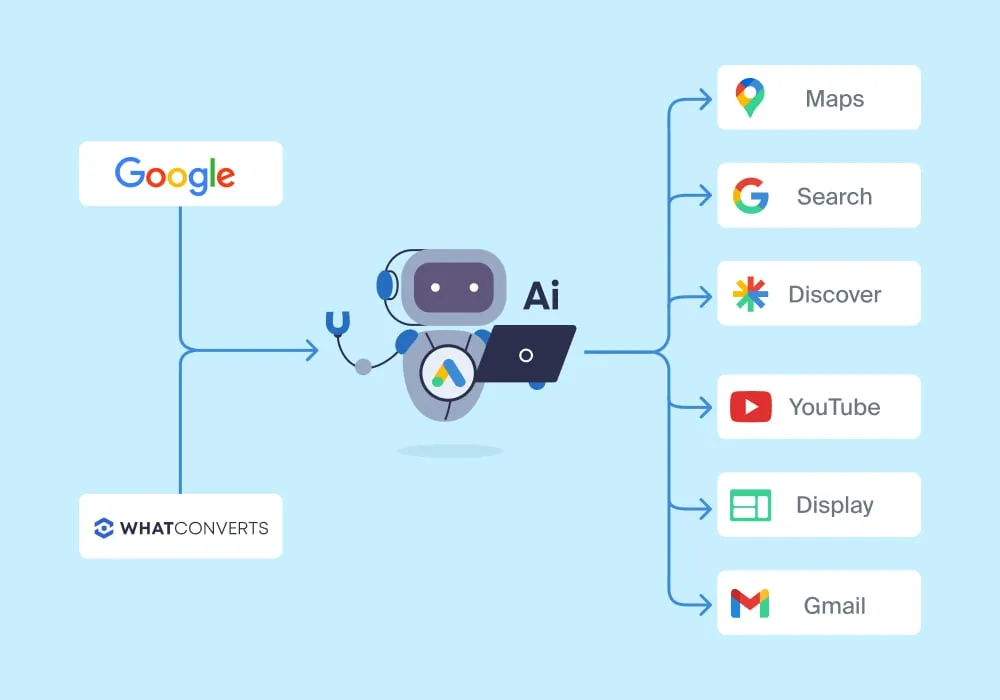
8 Step SEO Checklist to Supercharge Google PMax and AI Max ROI
8 Step SEO Checklist to Supercharge Google PMax and AI Max ROI
End ad waste forever. This proven SEO checklist for PMax transforms your website into Google’s ultimate asset engine, fueling Performance Max and AI Max campaigns with conversion-ready content. Stop letting AI generate generic ads from thin pages—implement these 8 strategic optimizations to boost ROAS by 40%+ through seamless paid-organic synergy.
Google’s AI doesn’t just deliver ads—it reads your site like source code. Poor structure equals poor performance. This blueprint aligns SEO excellence with PMax automation, ensuring every click lands on high-converting, AI-optimized pages across Search, YouTube, Display, and beyond.

Step 1: Achieve Technical Excellence and Lightning UX
Conversion rate is Smart Bidding’s north star. A single second of load delay kills CVR and wastes every ad dollar. Core Web Vitals aren’t optional—they’re ROI multipliers for PMax campaigns.
Common Mistake: Fixing only critical crawl errors while ignoring performance bottlenecks. Broken robots.txt or noindex tags block AI entirely, but slow LCP destroys conversions post-click.
Action Plan: Target 100/100 mobile PageSpeed scores. Implement SSR for dynamic sites or aggressive caching for static. Preload critical fonts, defer non-essential JS, and compress images to WebP. Test via PSI and fix CLS issues with proper aspect ratios.
- LCP: Under 1.8s
- FID: Under 50ms
- CLS: Under 0.05
- TBT: Under 200ms
PMax Impact: Higher CVR signals trigger aggressive bidding, expanding reach. AI Max avoids routing traffic to slow pages, preventing bounce waste.
Step 2: Deploy Multimodal Assets That Dominate Every Channel
PMax spans 6+ inventory types. Missing video assets cripples YouTube and Discover performance, forcing AI to auto-generate low-quality content.
Fatal Error: Relying on stock photos. Generic visuals produce generic ads with 60% lower CTR.
Optimization Strategy: Embed 3+ high-res images per page in required ratios (1:1, 16:9, 4:5). Include 15-30s vertical videos showcasing USPs. Use descriptive alt text with target intents.
Pro Tip: Create asset libraries organized by buyer journey stage—awareness videos, consideration carousels, conversion CTAs. PMax AI selects optimal combinations automatically.
Step 3: Supercharge E-Commerce Feeds for Retail Dominance
For retailers, Merchant Center feeds are PMax’s lifeblood. Thin data = thin performance in Shopping carousel.
Critical Oversight: Writing feed descriptions for SEO, not ad relevance. Missing attributes kill eligibility.
Feed Mastery: Include GTIN, MPN, brand, color, size, material in titles. Use custom labels for margin tiers. Update inventory hourly. Add promotional text fields.
- Title Formula: [Brand] [Product] [Key Feature] [Size/Color] - [Discount]
- Image Requirements: 800x800+ px, white background
- Price Accuracy: Real-time sync
Result: 300% more Shopping impressions, 45% higher ROAS from precise long-tail matching.
Step 4: Craft Conversion-Focused Text Assets
PMax headlines and descriptions pull directly from page content. Vague copy produces vague ads.
Avoid: Keyword-stuffed H1s that confuse AI. “Best Running Shoes NYC Cheap Sale” becomes terrible ad copy.
Implement: Scannable benefit blocks above fold. Use H2s for USPs, bullet points for features, bold pricing. Structure: Problem → Solution → Proof → CTA.
AI Max Bonus: Dynamic text customization pulls exact phrases, creating hyper-relevant responsive search ads.
Step 5: Implement Granular Structured Data Markup
Schema markup is AI’s instruction manual. Without it, PMax guesses—often wrongly.
Mistake: Site-wide organization schema only. AI can’t extract prices, ratings, or availability.
Advanced Schema Stack: Product (with offers), FAQ, HowTo, Review, BreadcrumbList, VideoObject. Use JSON-LD in head. Validate weekly via Rich Results Test.
- Product Schema: Include price, availability, aggregateRating
- FAQ Schema: 5-7 high-intent questions
- Review Schema: Import from Trustpilot/Yotpo
Impact: 25% CTR lift from rich snippets, AI generates accurate sitelinks and callouts.
Step 6: Build Topical Authority with Content Pillars
URL Expansion fails when AI can’t find the perfect page. Siloed content confuses matching.
Error: 50 thin pages for “blue running shoes size 10 NYC”. AI picks randomly.
Solution: Create comprehensive pillar pages with TOC navigation. Internal link clusters. Use semantic HTML. Cover every intent variant in sub-sections.
PMax Win: AI confidently routes all “running shoes” queries to authoritative hub, maximizing relevance score.
Step 7: Amplify E-E-A-T Signals for Trust
Google’s AI favors authoritative sources. Weak trust signals = weak ad quality scores.
Avoid: Generic “About Us” page. No author bios, no credentials.
Deploy: Detailed author schema with credentials. Customer testimonials with photos. Trust badges. Clear policies. Media mentions carousel.
AI Max Advantage: Higher trust pages selected for broad match expansion, reducing irrelevant traffic.
Step 8: Establish Cross-Team Collaboration Loops
SEO and paid teams in silos = missed opportunities. PMax search terms reveal goldmines.
Monthly Sync Protocol: Review top 100 converting queries. SEO creates dedicated pages. Paid adds negatives for irrelevant terms. Track ROAS lift.
- Week 1: Paid shares search term report
- Week 2: SEO builds 3 new landing pages
- Week 3: Paid tests URL expansion
- Week 4: Measure CVR/ROAS improvement
Case Study: Retailer implemented loop, created 47 new pages from PMax data, increased ROAS 68% in 90 days.
Advanced PMax and AI Max Optimization Tactics
Beyond basics: Use audience signals to prime AI. Create asset groups by funnel stage. Enable enhanced conversions. Test value-based bidding with LTV data.
Measurement and Iteration Framework
Track: Asset performance rating, search term CVR, URL expansion accuracy. Set 90-day goals: 20% ROAS lift, 85%+ asset rating, under 5% irrelevant traffic.
The Future of SEO-Paid Integration
AI Max will expand to predictive page selection. PMax will incorporate real-time inventory. SEO teams become performance architects, building sites that think like Google’s AI.
Start Your Transformation Today
Audit one product category. Implement steps 1-3 this week. Schedule first cross-team sync. The AI revolution rewards preparation—position your site as the perfect fuel source now.
Tags
Comment / Reply From
You May Also Like
Popular Posts
Newsletter
Subscribe to our mailing list to get the new updates!





